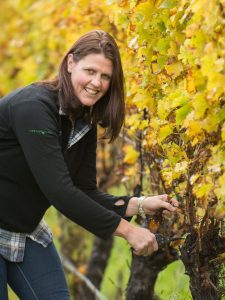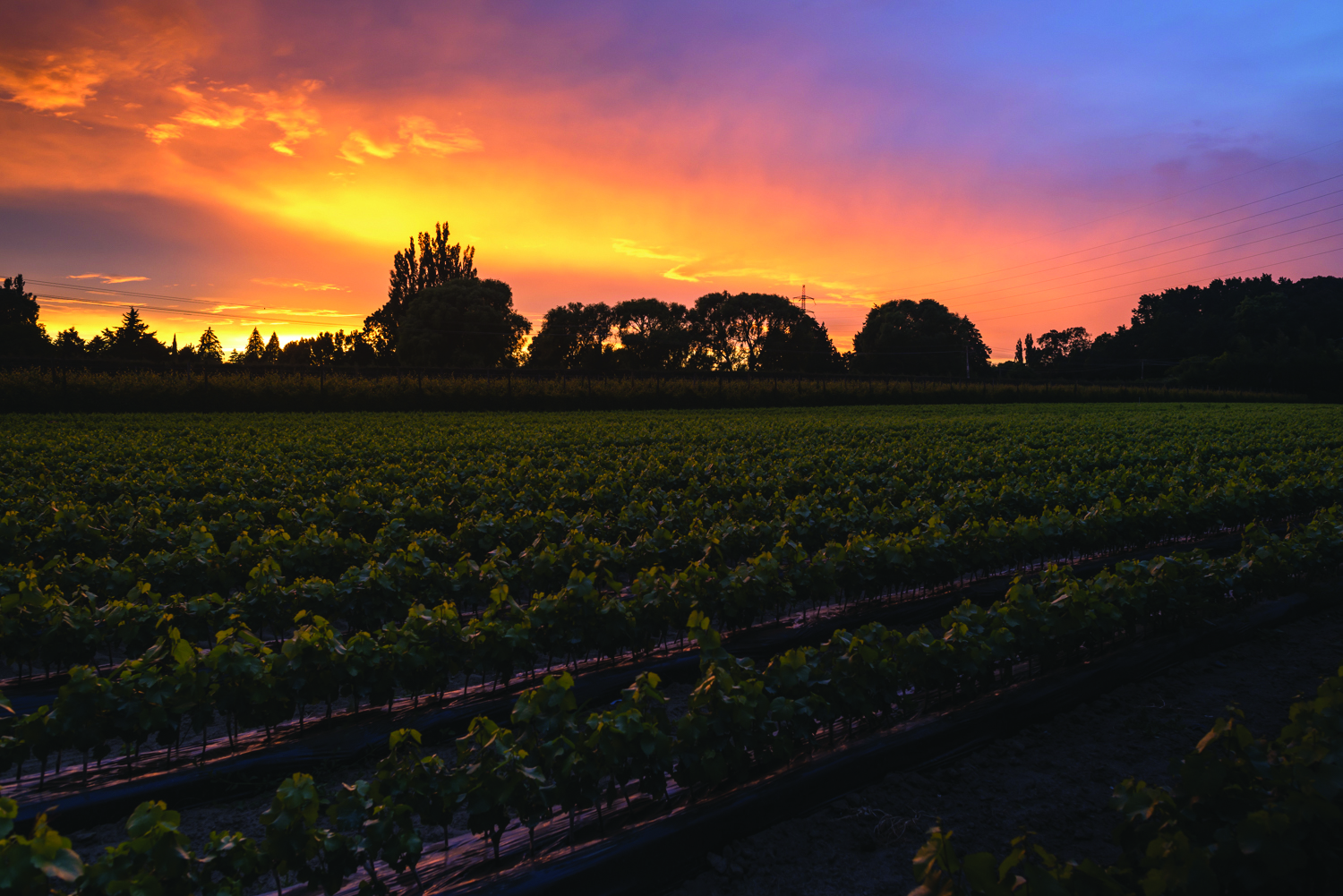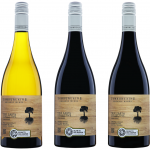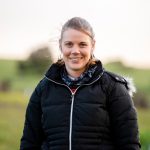Success story: Emma Taylor
Emma Taylor is never one to shy from a challenge. Ambitious, dedicated and hungry for knowledge, she has grown her strengths across many areas of viticulture, and now spends her days as the nursery viticulturist at Hawke’s Bay winery, Villa Maria. Chloe Szentpeteri spoke to the experienced New Zealander, to learn more of her story.
Emma Taylor is the embodiment of a success story. The 40-year-old was born in Auckland and has made her way through New Zealand’s wine regions in her various viticultural roles.
Her first employer was Villa Maria, New Zealand’s most awarded winery, and she loved it so much she never left.
Starting her career as a cadet, she quickly earned her stripes and climbed the ranks from research viticulturist, to company viticulturist, through to project manager and finally to her current role, nursery viticulturist of Villa Maria’s Hawke’s Bay nursery, Vineyard Plants.
But Taylor’s career isn’t the only notable achievement. The mother of three also holds two prestigious titles and has helped in research development for trials of vine health and disease management.
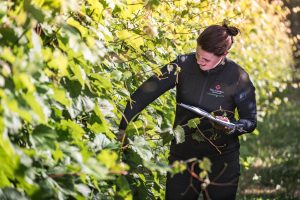
Mastering the vines
Taylor was studying an undergraduate degree in physical geology, and a Master of Science at Otago University, when she was searching for a topic to do her thesis on.
It was the guidance of Country Calendar – a TVNZ programme that covers rural life – that happened to be focussing on the organic Milton Vineyard and Winery in Gisborne, which has since become biodynamic.
“And I thought that’s what I want to do, I want to look at the difference between organic vineyards and conventional,” Taylor exclaimed.
A complex topic, Taylor said she is still trying to grapple with the answers to those questions now.
So instead her professor suggested to look at copper accumulations and organic versus non-organic vineyards.
Peak industry body, New Zealand Winegrowers, funded her project and she took the opportunity to explore the regions.
“I travelled all around New Zealand to the different wineries and looked at all the different soils and sampled them,” Taylor explained.
She said the industry insight was enough to plant the seed of her career, which has blossomed ever since.
“I met all the people in New Zealand and that was a few years ago at the end of 1999/2000.
“The industry was starting to boom and was full of energetic and innovative people and I wanted to be a part of it,” she said.
As a New Zealand tradition, Taylor did her overseas experience (more commonly referred to as OE) in viticulture, and travelled throughout the UK before returning to a short term contract at Villa Maria.
“I had my masters and I obviously had no viticultural knowledge but I just knew that I wanted to get in there and I knew applied copper and that’s about it.
“Villa was looking for a research viticulturist at that time, which was going to sync with their research program and I didn’t get that role but they took me on a six month contract initially to help out in Hawke’s Bay during vintage and doing all the technical stuff like bunch weights, yield estimation and more,” she explained.
And the tie to Villa Maria didn’t stop there. Taylor was offered a year-long cadetship which she described as ‘amazing, real-life training’.
“They took me through all aspects of the company. I went and joined sales for six weeks and I worked in the cellar for six weeks and then that year I did all the yield estimates in Gisborne, Hawke’s Bay and Marlborough, which is where we used to be,” she said.
“So I moved around the country and the company lots, understanding everything really. It gives you such a broad understanding of the whole process, right from the vines, to the nursery and the bottom line to sales.”
After the cadetship, Taylor became the research viticulturist, offering technical support, doing yield estimates and coordinating with other technical officers throughout the regions.
Her career was temporarily interrupted by the desire to travel and she left with her husband to work in logistics in England.
But to Taylor’s surprise, one day she received a call from the founder of Villa Maria, George Fistonich, who offered her the top role of company viticulturist.
And, of course, she said yes.
Taylor came back for the first vintage while her husband continued travelling in the UK.
“I worked a few months and then finished travelling in the UK and finally came back fulltime.
“I had that company viticulturist role for four years until I had my first child in 2007 and it was while I was on maternity leave with my first child that I entered the young viticulturist competitions and the young horticulturist of the year competition, she explained.
“And then I won.”
Awards and achievements
The competitions were in their second year, and anyone interested needed to apply firstly for the regional competition.
And when Taylor found out she was pregnant, she knew the competition would be worth a try.
“In the wine industry, awards mean a lot, especially for winemakers, they get a lot of accolades as well they should, but there’s not that much out there for viticulturists.”
“I thought, if I don’t step up for this I’m going to regret it, and that first year I was newly pregnant and I didn’t really want to run around putting posts in the ground and scrambling around under wires,” Taylor laughed.
“I entered the Hawke’s Bay competition and I was successful, although I think that was one of the hardest competitions I ever did because you’re really going against your peers and everyone knows the region the best.”
After her first round win, Taylor went on to the national competition where contestants competed against all the other regional finalists and took the title of the 2007 ‘Young Viticulturist of the Year’.
And why stop there? Taylor entered the young horticulturist competition, against fruit and vegetable growers, forestry and a range of other industries, and won that too.
“It was pretty cool and it was a really great way to keep my motivation up,” she said.
“As I was on maternity leave I didn’t want people to think that now that I’d gone and had a baby that would be it for me.
“I wanted to keep a hand in the industry and a finger in the pie, and it was a way to keep current while I was on leave.”
After Taylor won the young viticulturist competition, she decided to coordinate it for eight years and during that time she has seen the industry evolve and technology grow.
Reflecting on her experience as coordinator, Taylor said she found the responses to competition questions had changed.
Once upon a time, seven out of eight contestants would respond to a question on sprays with a conventional spray programme.
Now, she said every single contestant could provide a conventional and organic method and use both as
an example.
“That knowledge and growth in the softer chemicals has really grown in viticultural awareness, the whole industry is growing,” Taylor said.
Present day
After having her second and third children, Taylor no longer wanted to work in the company viticulturist role that demanded so much travel.
Instead, she became the nursery viticulturist four years ago and remains in that role to this day… With a little research on the side.
“I was hungry for knowledge on top of doing my projects, so outside of work I also sat on the New Zealand Winegrower research committee and was involved in a lot of the big research programmes like the virus elimination project and the grapevine trunk disease project among others.
“One of the biggest challenges we have in the nursery industry is managing trunk disease. There’s a lot of pressure on the nurseries and there’s a perception that nurseries are spreading trunk diseases,” Taylor explained.
The New Zealand Vine Industry Nursery Association (VINA) includes all the nursery suppliers in the industry and works in collaboration with New Zealand Winegrowers on grafts and grapevine standards.
Two years ago the organisations updated the grafts and grapevines standards to incorporate vine health, which elaborates on how many hygiene practices nurseries follow to ensure the risk of trunk disease spread is minimal.
“New Zealand nurseries, because there’s a smaller number of us, we’re quite scientifically aware of the latest research out there,” Taylor said.
“We have recently undertaken our own research looking at testing the effects of hot water treatments on trunk disease and vines compared to no hot water treatment, and what those trunk disease levels were and we found that hot water treatments didn’t make any difference to the bacterial or fungal disease counts in the vine.”
This trial is ongoing and will continue as a long-term method of data retrieval for hot water treatments as the vines grow older.
With a ‘perception’ that nurseries spread trunk vine diseases, Taylor said the dedication from New Zealand Winegrowers is important to ensure awareness of trunk disease and what tools are available to understand it and prevent it in a nursery.
Taylor said another issue is the lack of a standardised measurement for trunk vine disease.
“The VINA project was developing some qPCR technology [to detect DNA sequences]to try and quantify how much disease we had and it’s got that methodology out there which requires fine tuning over time,” she said.
“I know there’s some research going in Marlborough looking at how to quantify it and measure trunk disease and it’s happening globally as well.
“There’s also a vineyard ecosystem project happening and it’s looking at the impact of spray on Botrytis and this research is looking at the impact it’s having on your soil, and the overall vine health and if it affects the water uptake of your vines. It’s really interesting,” she added.
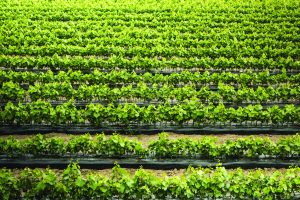
Villa Maria’s Nursery
A lighter note
With so much research and nursery duties to keep her busy, Taylor said no day is the same.
“I enjoy the variety. If you’re a viticulturist or winemaker every vintage is different and there’s something different about every season, whether it’s the heat you’ve had or the rain or the wind.
“In the nursery, seasonality can have a huge impact and it means no two days are the same.”
Taylor said her career and enjoyment in her various roles wouldn’t have been possible without George Fistonich, Villa Maria’s founder.
“His insights are so spot on and his ability to innovate and to let people play to their strengths. He’s a pioneer,” she explained.
“He started Villa Maria over 50 years ago. It’s a long time and he did a lot of ‘firsts’ for New Zealand during that time.”
When asked if she drinks wine, Taylor responded with a laugh.
“Of course I drink wine. I do like the Te Awa Leftfield Albarino. It’s a relatively new variety in New Zealand and I’ve yet to hear of someone who doesn’t like it.”
Taylor has worked hard for the opportunities throughout her life, and certainly hopes they keep on coming.
“I’ve been very lucky because even though I’ve stayed within the one company in New Zealand I’ve had a lot of opportunity and a lot of different roles within Villa Maria and so my next plan is to not miss out on the next opportunity.
And never shy from a challenge, she finished with a promise.
“I’ll keep my eyes and ears open so I can keep being passionate.”
*This article was originally published in the Australian and New Zealand Grapegrower & Winemaker April 2018 edition.
